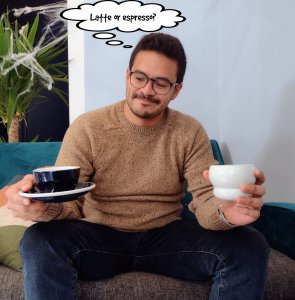What do quantum mechanics, genetics, economic choice theory and ant behaviour have in common? Naturally, the first answer is that they have nothing at all to do with each other! Nonetheless, finding bridges between different fields is the bread and butter of the field of complex systems, an offshoot of statistical physics and other fields.
A lot of the research I do at the Institute for New Economic Thinking concerns the modelling of economic agents - firms, banks, households or anything else of the sort. Traditional neoclassical models achieve this by stating that each agent has a behaviour where they maximise a utility function, with perhaps a few constraints. This means, for example, that whenever I go for lunch I try to pick a sandwich that will maximise my utility with the constraint that I cannot go over my budget. I believe this is unrealistic for a number of reasons, the main one being that I do not think that people are rational but rather that they follow simple thumb rules (maybe I am lazy about comparing options and just pick the same sandwich I always pick), and in particular that they tend to imitate their peers (if I see my friend pick a sandwich, I may be more inclined to take it out of curiosity).
Because people tend to imitate each other, we observe quite impressive socio-economic phenomena. Think fashion fads, for example, or think of a financial bubble where the price of an asset shoots up as it becomes more popular, thereby enticing more people to buy it and push the price further up. In contrast with the utility explanation, there is no fundamental reason why any of these choices may become popular. This means that more realistic modelling needs to take this imitative behaviour into account.
An interesting metaphor for this, picked up by economist Alan Kirman and mathematician Hans Föllmer, was found in an entomology experiment. A colony of ants faced with two strictly identical, inexhaustible food sources, was found to concentrate at any given time on only one of the food sources, before switching collectively and at random to the other source. There is no change in the nature of either of the food sources that would motivate nearly all the ants in the colony to decide to go elsewhere.
This led the researchers to introduce a model where they took into account the imitative behaviour between ants. At any given time, an ant can look at one of its peers and decide to imitate their choice (and so to switch to the other food source, possibly) or it can also decide, at random, to switch to the other food source. It's easy to see the imitative self-reinforcing behaviour at work: if nearly all the ants are at food source A, then when an ant decides to imitate it is likely it will decide to stay at A. However, once an ant decides to switch to B, it may trigger a snowball effect where one of its peers imitates it, creating a larger and larger mass of ants concentrated there that will attract even more ants.
Although simple, this model is in fact very rich, and when one writes down the equations it is astonishingly close to models used in other domains. For example, the self-reinforcing behaviour is the same as the one of Pólya urns, where one has red and blue balls in an urn, and you draw a ball at random and then replace it in the urn along with a ball of the same colour, leading often to a single colour making up the overwhelming majority in the urn.
It is also the same as the Moran (after Patrick Moran, an Oxford Mathematician) model in genetics, where the binary entities are no longer two food sources or two colours of balls, but two alleles of a gene in a population, and where an allele's population is more likely to increase when it is the dominant allele. It is also similar to the voter model, where agents can vote between two political parties (Left and Right). Similar models also exist for financial markets, where the binary choice is to buy or sell an asset, with a feedback mechanism that works through the price of the asset. Although all of these models may differ significantly in the details of their description, they all have very similar phenomenology, and can also be studied using the same set of tools.
James Holehouse and I followed up on the work I had done previously. Although the model’s stochastic evolution is initially formulated in discrete time, it can be mapped onto a continuous-time process, with a stochastic differential equation where the variable of interest is the fraction of ants in one of the food sources. One can then write its associated Fokker-Planck, or Kolmogorov-forward, partial-differential equation. After a few changes of variables, it can in fact be mapped onto the Schrödinger equation of a particle in a tan2, or Pöschl-Teller, potential. The entire dynamics of this model can then be fully solved by finding the energy levels of the potential and their associated eigenfunctions. The main finding of the paper is that it is indeed one single ant switching from one source to the other that triggers an avalanche of ants doing the whole collective switch.
This was quite the adventure! Starting from an economic question of how people make consumption choices, we can consider simpler systems, such as colonies of ants, that have a collective behaviour that is rather counter-intuitive. A mathematical description of such a system ends up being intimately related to models used in fields like genetics. When trying to solve it, we can end up looking into the quantum mechanics toolbox, and we actually gain deep insight into the mechanisms at work! This, I should say, is the beauty of interdisciplinary research.
José Moran is a postdoctoral research associate in Oxford Mathematics.


